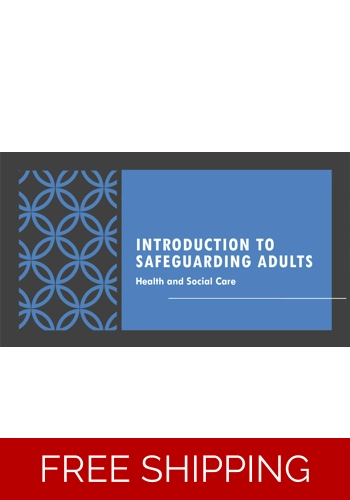Safeguarding Adults - Residential Care - Introduction to Safeguarding Adults
Introduction to Safeguarding Health and Social Care Training Resources - this is a general introduction to Safeguarding.
Aims:
- To provide an understanding of the concept of safeguarding adults in residential care
- To familiarise care home staff with the importance of safeguarding adults and their role in ensuring the safety and well-being of residents.
- To enhance awareness of different types of abuse and neglect and their potential impact on individuals and the care home setting.
- To establish a clear understanding of the duty of care and the specific responsibilities of care home staff in safeguarding adults.
Learning Objectives:
A. Definition and importance of safeguarding adults
- Define safeguarding adults in the context of residential care.
- Explain the significance of safeguarding adults in promoting well-being and protecting vulnerable individuals.
- Understand the legal and ethical implications associated with safeguarding adults.
B. Types of abuse and neglect
- Identify and describe the different forms of abuse, such as physical, emotional, sexual, financial and neglect.
- Recognise the signs and indicators of abuse and neglect.
- Understand the potential risk factors and vulnerabilities that may make individuals more susceptible to abuse.
C. Impact of abuse on individuals and the care home setting
- Explore the physical, emotional and psychological consequences of abuse on individuals.
- Discuss the potential implications of abuse for the overall well-being and quality of life of residents.
- Consider the broader effects of abuse on the care home, including staff morale, reputation and legal implications.
D. Duty of care and responsibilities of care home staff
- Define duty of care and its relevance to the role of care home staff.
- Identify the specific responsibilities of care home staff in safeguarding adults.
- Understand the importance of effective communication, documentation and reporting in fulfilling duty of care obligations.
PowerPoint Presentation (74 slides)
Word Documents - 4 x Handout, End of Session Multiple Choice Assessment, , Suggested other learning activities.
Slide Titles:
Aims
Objectives
Welcome
SECTION HEADER - Definition and Importance of Safeguarding Adults
Objectives
Definition
Protection from Abuse
Significance of Safeguarding Adults
Promoting Dignity and Respect
Significance of Safeguarding Adults
Enhancing Wellbeing
Significance of Safeguarding Adults
Duty of Care
Significance of Safeguarding Adults
Compliance with Legislation
Prevention and Early Intervention
Collaborative Approach
SECTION HEADER - Types of Abuse and neglect
Objectives
Physical Abuse
Emotional Abuse
Sexual Abuse
Financial Abuse
Institutional Abuse
Neglect
SECTION HEADER - Examples of Abuse in Residential Care
Physical Abuse
Emotional Abuse/Psychological Abuse
Sexual Abuse
Financial Abuse
Neglect
Institutional Abuse
SECTION HEADER - The Impact of Abuse on Individuals and the Care Setting
Objectives
Physical Impact on Individuals
Emotional Impact on Individuals
Loss of Trust
Impact on Mental Health
Impact on the Care Setting
Staff Morale and Retention
Damage to Reputation
Legal Consequences
Decreased Resident Confidence
SECTION HEADER - Duty of Care and Responsibilities of Care Home Staff
Objectives
Duty of Care
Responsibilities of Care Staff
Ensuring Resident Safety
Person Centred Care
Recognising and Reporting Abuse
Documentation and Record Keeping
Continuous Monitoring and Risk Assessment
Collaborative Working
Compliance with Policies and Regulations
SECTION HEADER - Ethical Considerations
Confidentiality
Respect and Dignity
Whistleblowing
SECTION HEADER - RECAP
Recap
References and Further Reading
HSC Training Link
Training Resources for Health and Social Care
Supplying training resources for the health and social care
sector since 2004.
Resources purchased are emailed to you via
Zip Folder attachment.
All packs are written in a generic style and can easily
be adapted to suit your own specific training delivery.
Resources are Microsoft Office based.
Secure payments via PayPal Merchant Commerce Platform.
You do not need a PayPal account to use this payment
gateway.
Debit and credit card payments accepted.





